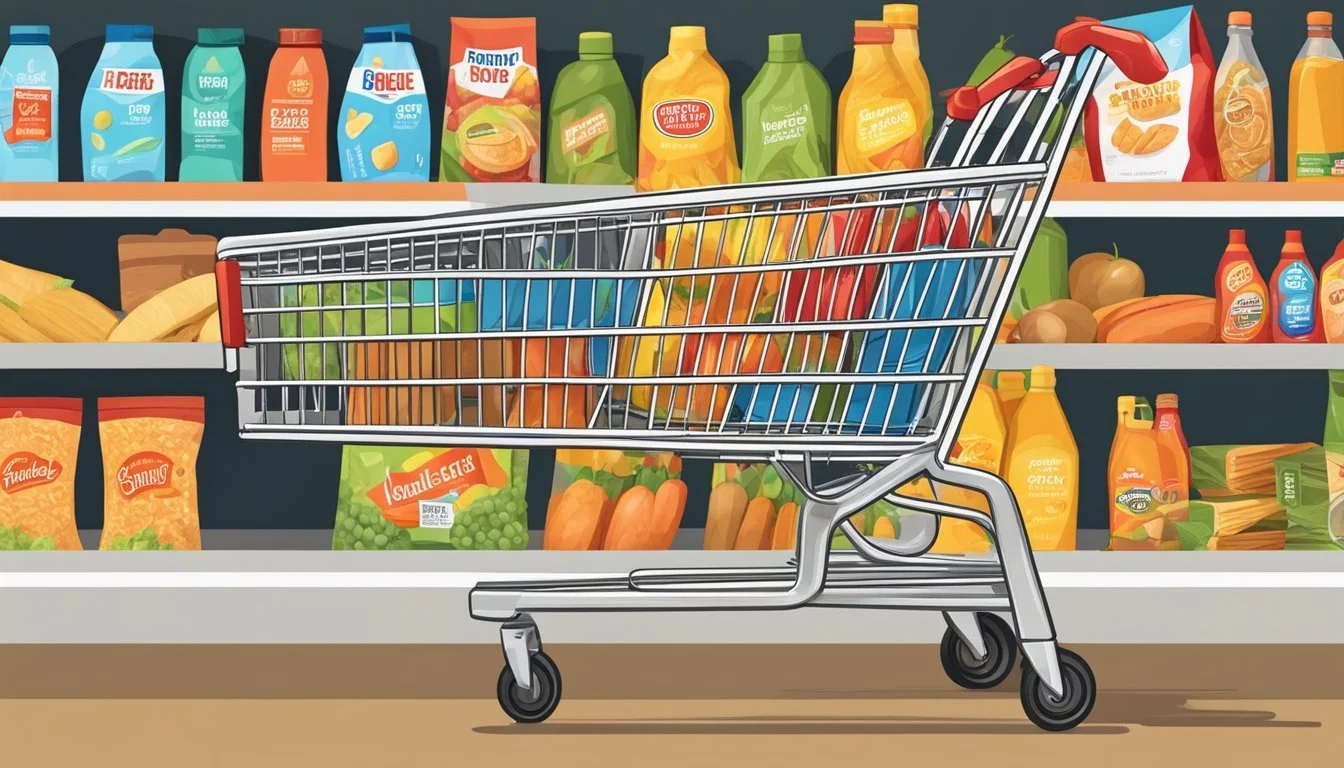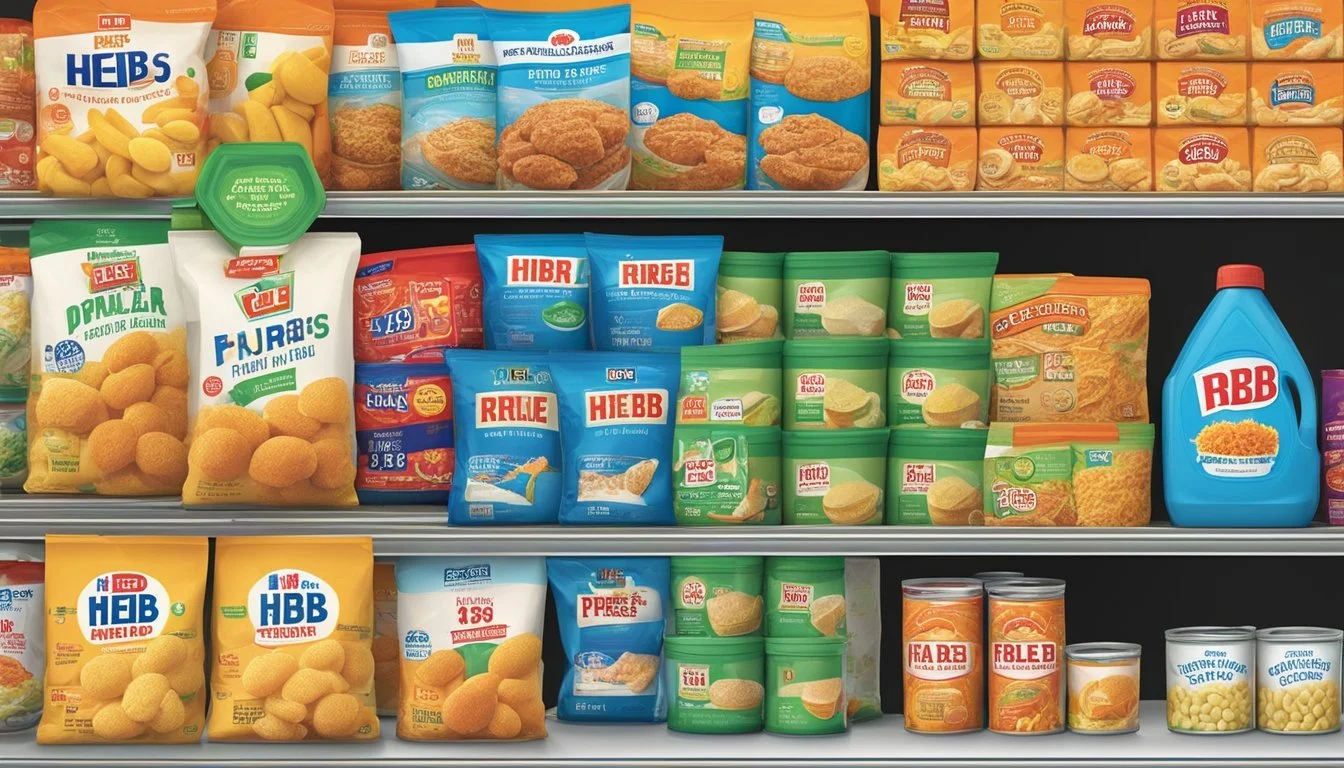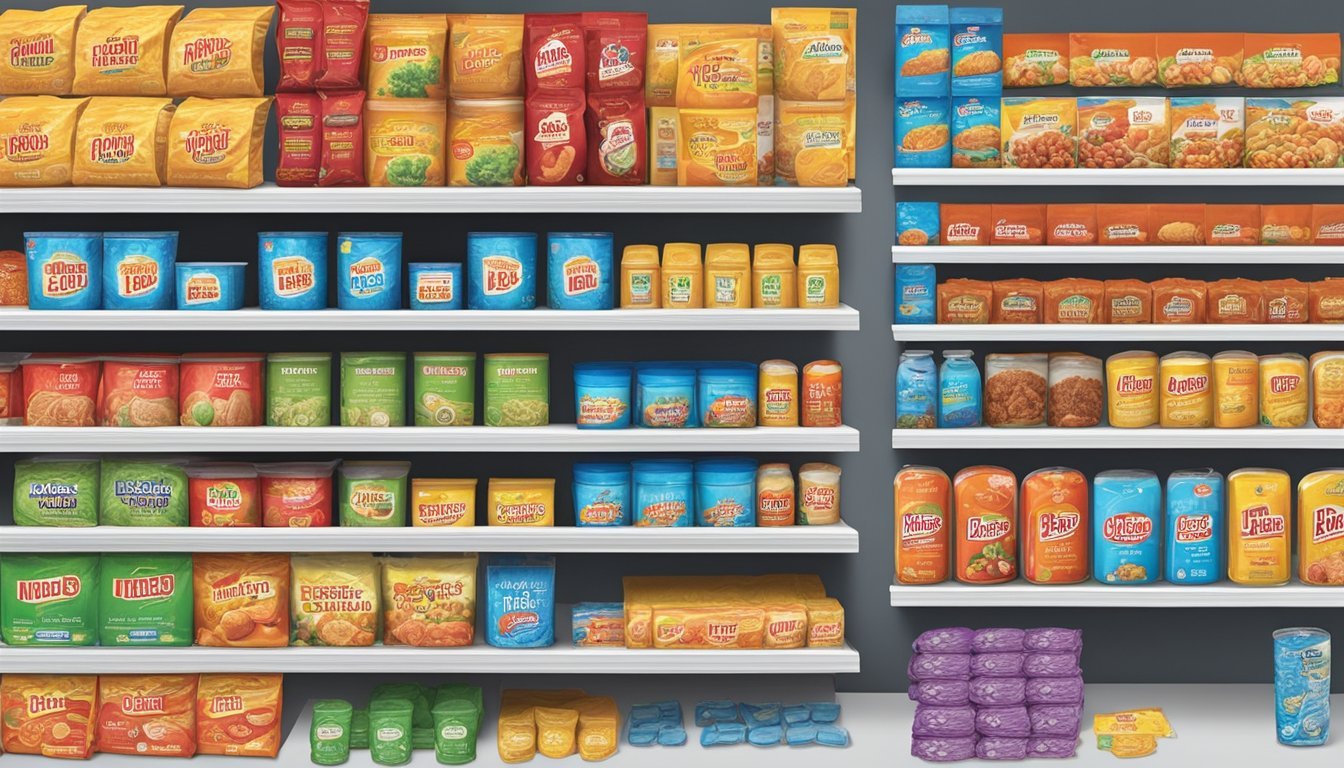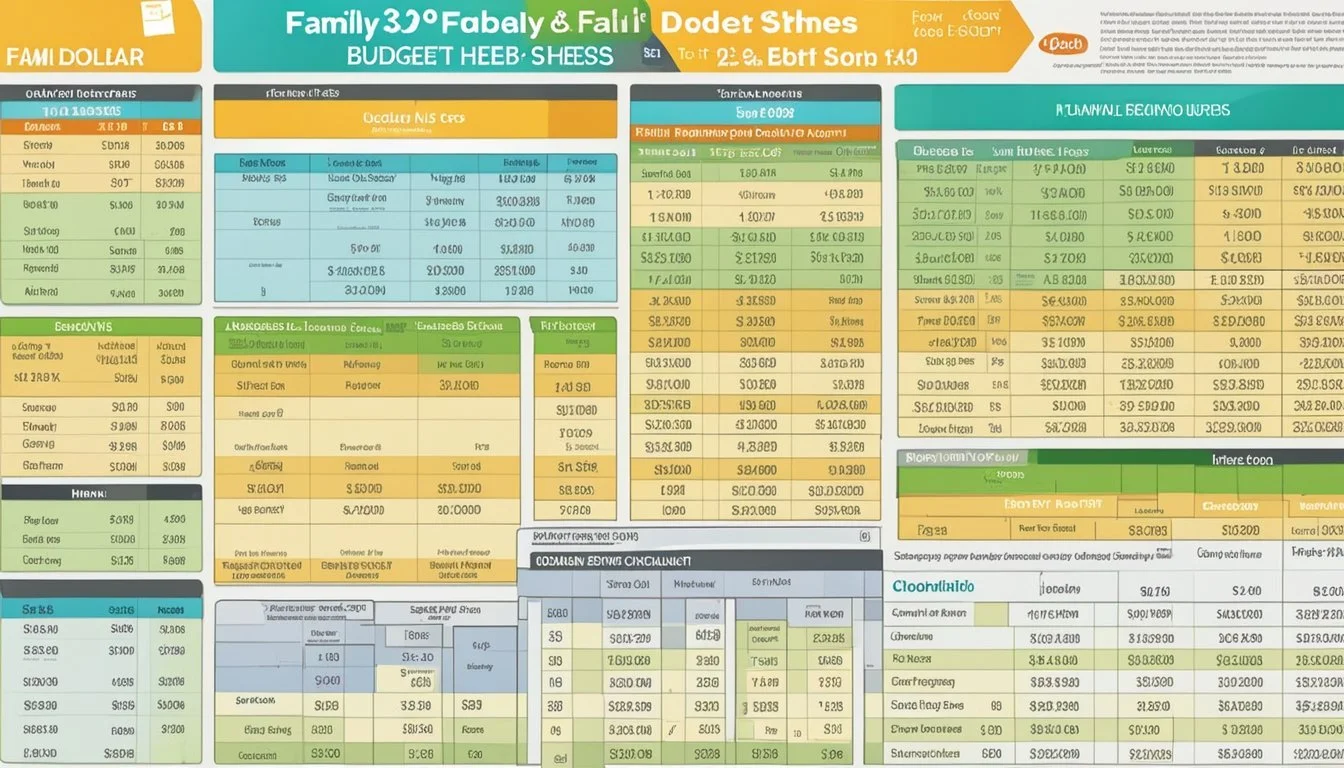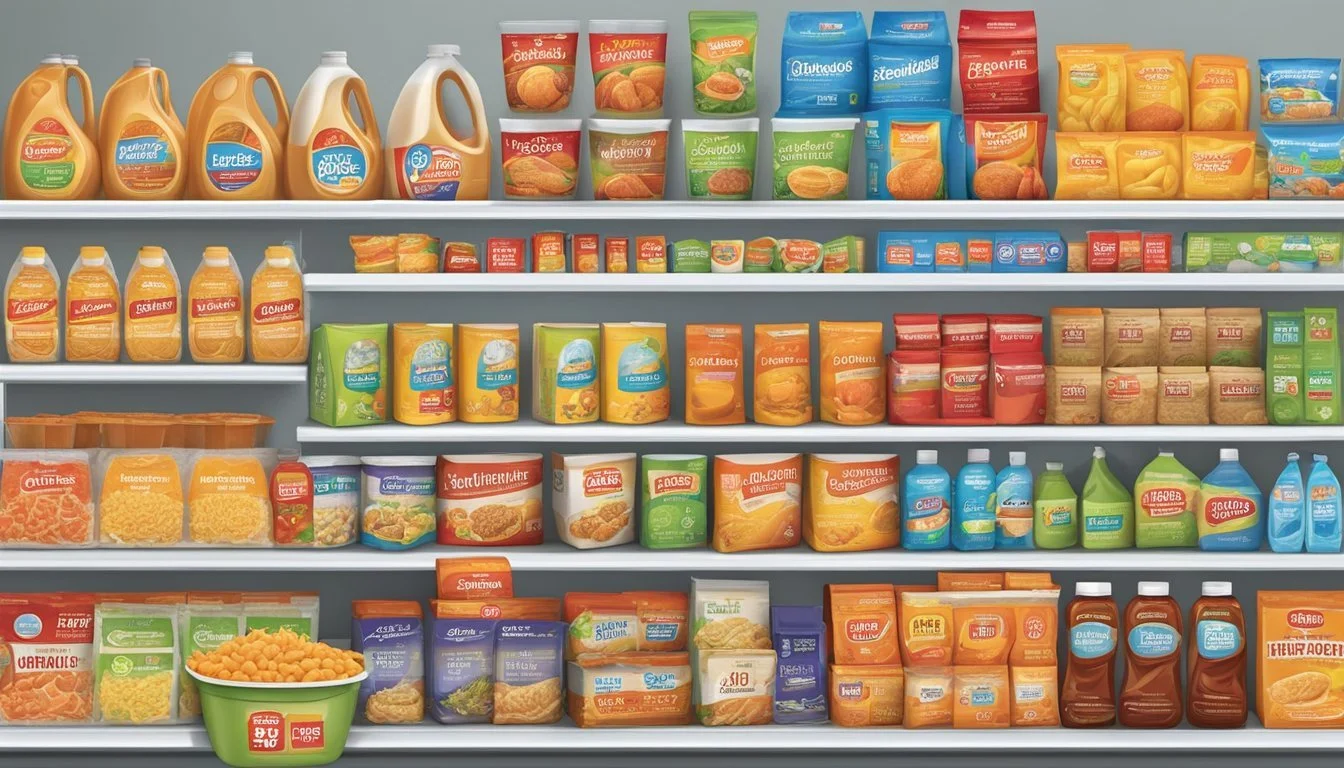Is Family Dollar Cheaper Than H-e-b?
A Cost Comparison Of Two Popular Retailers
When it comes to shopping for groceries and household essentials, consumers often seek the best deals to stretch their budgets. Family Dollar and H-E-B are two popular retail chains that cater to price-conscious shoppers, but they differ in their offerings and pricing strategies.
Family Dollar generally offers lower prices on many items compared to H-E-B, especially for non-perishable goods and household products. As a dollar store, Family Dollar focuses on providing a wide range of affordable merchandise, including some grocery items. H-E-B, on the other hand, is a full-service grocery store that offers a broader selection of fresh produce, meats, and specialty products.
Price comparisons between these two stores can vary depending on specific items and locations. While Family Dollar may have cheaper prices on certain products, H-E-B often provides competitive pricing on groceries and frequently runs promotions. Shoppers looking to maximize their savings might consider splitting their purchases between the two stores, taking advantage of Family Dollar's low prices on household goods and H-E-B's grocery deals.
Understanding Dollar Stores
Dollar stores have become a significant part of the American retail landscape, offering a wide range of products at low prices. These stores employ unique business strategies to keep costs down and attract budget-conscious shoppers.
Business Model of Dollar Stores
Dollar stores operate on a low-margin, high-volume model. They typically stock smaller package sizes and off-brand products to maintain low prices. These stores often locate in areas with lower real estate costs and have minimal staffing to reduce operational expenses. Dollar stores also negotiate aggressively with suppliers to secure bulk discounts.
Many dollar stores now offer items above $1, with Dollar Tree raising its base price to $1.25 in 2021. This shift allows them to expand product selection and maintain profitability amid rising costs. Some dollar stores also carry a mix of regularly priced items alongside their discount offerings.
The Rise of Dollar Store Chains
Dollar store chains have experienced rapid growth in recent years. Dollar General, Family Dollar, and Dollar Tree have expanded their presence across the United States, particularly in rural areas and low-income urban neighborhoods. These chains have benefited from economic uncertainty and increased price sensitivity among consumers.
As of 2024, Dollar General operates over 18,000 stores, while Dollar Tree (which acquired Family Dollar in 2015) has more than 15,000 locations combined. This expansion has led to concerns about the impact on local businesses and grocery stores in some communities.
Dollar Tree Plus and Store Expansion
Dollar Tree has introduced a new concept called Dollar Tree Plus, which includes sections with items priced at $3 and $5. This strategy allows the chain to offer a broader range of products and capture more consumer spending. The company plans to expand this format to thousands of stores in the coming years.
In addition to Dollar Tree Plus, the company is also renovating Family Dollar stores and opening combination stores that feature both Dollar Tree and Family Dollar brands under one roof. These initiatives aim to increase foot traffic and boost sales across their store network.
Examining H-E-B
H-E-B stands as a prominent grocery chain in Texas, known for its quality products and competitive pricing. The company's business model, market position, and store brand offerings contribute to its popularity among shoppers.
Overview of H-E-B's Business
Founded in 1905, H-E-B has grown into a major player in the Texas grocery market. The company operates over 400 stores across Texas and Mexico. H-E-B focuses on providing a wide range of products, including fresh produce, meats, and prepared foods.
The chain emphasizes local sourcing, partnering with Texas farmers and producers. This strategy allows H-E-B to offer unique regional products and support local economies.
H-E-B's business model also includes a strong commitment to community involvement. The company regularly donates to local charities and disaster relief efforts.
H-E-B's Position in the Grocery Market
H-E-B holds a significant market share in Texas, competing effectively against national chains. The company's focus on understanding local preferences gives it an edge in tailoring its offerings to Texan customers.
In recent years, H-E-B has expanded its e-commerce capabilities, offering curbside pickup and delivery services. This move has helped the chain stay competitive in the evolving retail landscape.
H-E-B's pricing strategy aims to be competitive while maintaining product quality. The chain often runs promotional campaigns and offers digital coupons to attract price-conscious shoppers.
Store Brand and Product Quality
H-E-B's store brands play a crucial role in its product lineup. These private-label items offer customers quality alternatives at lower prices compared to national brands.
The company's flagship store brand, simply labeled "H-E-B," covers a wide range of products from groceries to household items. Other private labels include:
Hill Country Fare: Value-oriented products
Central Market: Gourmet and specialty foods
Meal Simple: Prepared meals for convenient dining
H-E-B prioritizes quality control for its store brands, often matching or exceeding the quality of national brands. This commitment to quality helps build customer loyalty and trust in H-E-B's private-label offerings.
Comparative Price Analysis
Family Dollar and H-E-B offer different shopping experiences and pricing strategies. A closer look at their product costs, promotions, and pricing factors reveals key differences between these retailers.
Price of Common Grocery Items
Family Dollar typically offers lower prices on packaged goods like cereal, pasta, and canned vegetables. A box of rice at Family Dollar may cost $1.50, while H-E-B might price it at $1.75. Toilet paper and laundry detergent often come in smaller sizes at Family Dollar, making per-unit costs appear lower.
H-E-B generally provides better value on fresh produce, meats, and dairy. A dozen eggs at H-E-B might cost $2.50, compared to $2.75 at Family Dollar. Bread and cheese usually have competitive prices at both stores.
Coffee prices can vary significantly. Family Dollar's house brand is often cheaper, while H-E-B offers a wider selection of premium options.
Discounts and Savings Opportunities
Family Dollar frequently runs "$1 deals" on various items. Their loyalty program offers digital coupons and personalized discounts. Weekly circulars highlight temporary price reductions on select products.
H-E-B provides a robust rewards program with points that can be redeemed for groceries. They offer combo deals, like discounted prices when buying multiple items together. H-E-B's mobile app features digital coupons and exclusive savings for app users.
Both stores have clearance sections for additional savings. H-E-B tends to offer more in-store promotions and sampling events that can lead to impulse purchases and savings.
Factors Influencing Price Differences
Store locations play a significant role in pricing. Family Dollar often operates in areas with lower real estate costs, allowing for reduced overhead. H-E-B's larger stores in more diverse locations may have higher operating expenses.
Supply chain efficiency impacts prices. H-E-B's strong regional presence in Texas allows for streamlined distribution, potentially lowering costs on local products. Family Dollar's national network might lead to economies of scale for certain items.
Product quality and selection differ between the two. H-E-B offers more premium and organic options, which can increase average prices. Family Dollar focuses on budget-friendly alternatives and smaller package sizes.
Market competition in different areas affects pricing strategies. Both stores adjust prices based on local competitors and consumer demographics.
Shopping Experience Comparison
The shopping environment plays a crucial role in customer satisfaction and loyalty. Family Dollar and H-E-B offer distinct experiences that cater to different consumer preferences and needs.
Store Layout and Cleanliness
Family Dollar stores typically feature a compact layout designed for quick trips. Aisles are narrow and packed with a variety of merchandise. The stores prioritize efficiency over spaciousness, which can sometimes lead to a cluttered appearance.
H-E-B, in contrast, boasts larger stores with wider aisles and more open spaces. The layout is often more intuitive, with clear signage and organized departments. H-E-B places a strong emphasis on cleanliness, regularly maintaining their stores to ensure a pleasant shopping environment.
Product displays in H-E-B are often more visually appealing, with fresh produce and specialty items showcased prominently. Family Dollar's displays are more functional, focusing on value and convenience rather than aesthetic appeal.
Checkout Efficiency
Family Dollar aims for quick transactions with minimal waiting times. Their stores often have fewer checkout lanes but can handle a high volume of customers efficiently due to the smaller average basket size.
H-E-B invests in a range of checkout options to reduce wait times. These include traditional lanes, self-checkout kiosks, and sometimes express lanes for customers with fewer items. During peak hours, H-E-B typically opens more lanes to manage increased traffic.
Both retailers strive to minimize queues, but H-E-B's larger stores and broader product range can sometimes lead to longer checkout times, especially for customers with full carts.
Customer Service
Family Dollar's customer service approach is straightforward and transaction-focused. Staff members are trained to be efficient and helpful, but the emphasis is on speed rather than personalized attention.
H-E-B is known for its commitment to customer service. Employees are often more knowledgeable about products and store layout. The company invests in training programs to ensure staff can assist with queries and provide recommendations.
H-E-B typically offers additional services such as in-store pharmacies, cooking demonstrations, and specialty counters staffed by experts. These features contribute to a more comprehensive and engaging shopping experience.
Family Dollar's service model is more limited, focusing on essential assistance and quick problem-solving to maintain their low-cost business model.
Assessing Product Range and Selection
Family Dollar and H-E-B differ significantly in their product offerings, catering to distinct consumer needs and preferences. These differences impact shopping experiences and purchasing decisions.
Variety of Available Brands
Family Dollar focuses on budget-friendly options, offering a mix of generic and select name-brand products. Their shelves typically stock familiar household names alongside their own private label items. H-E-B, in contrast, provides a wider array of brands, including premium and specialty options.
H-E-B's selection often includes local and regional brands, appealing to customers seeking unique or artisanal products. They also feature an extensive range of their own private label goods, many of which have gained popularity for their quality and value.
Family Dollar's limited space means a more curated selection, prioritizing everyday essentials and popular items. This approach can streamline shopping for budget-conscious consumers.
Availability of Household Items
Both retailers offer household goods, but with different emphases. Family Dollar excels in providing affordable basics like cleaning supplies, paper products, and personal care items. Their inventory often includes smaller package sizes, suitable for immediate needs or budget constraints.
H-E-B's household section is typically more comprehensive. It includes a broader range of products, from basic necessities to more specialized items. Shoppers can find everything from standard cleaning products to eco-friendly alternatives and high-end home goods.
Family Dollar's selection of household items tends to be consistent across stores, focusing on high-turnover products. H-E-B may vary its offerings based on store size and local demographics.
Impact of Selection on Consumer Choice
The product range at each store significantly influences shopping behavior. Family Dollar's limited but focused selection can benefit consumers looking for quick, budget-friendly purchases without overwhelming options.
H-E-B's extensive variety caters to diverse preferences and dietary needs. This breadth of choice allows shoppers to explore different brands and products, potentially discovering new favorites. It also accommodates more specialized shopping lists.
The difference in selection affects how consumers plan their shopping trips. Family Dollar might be preferred for specific budget items or emergency purchases, while H-E-B could serve as a one-stop shop for a wider range of household and grocery needs.
Financial Savings and Budget Impact
Comparing Family Dollar and H-E-B reveals key differences in pricing strategies and potential savings for consumers. These factors significantly influence household budgets and grocery expenses.
How Consumers Can Save Money
Shopping at Family Dollar can lead to savings on certain items. The store offers low prices on household essentials and non-perishable goods. Savvy shoppers can take advantage of Family Dollar's deals and promotions to stretch their budgets further.
H-E-B, while generally pricier, provides opportunities for savings through their loyalty program and weekly specials. Customers can maximize value by planning purchases around these offers.
Both stores accept manufacturer coupons, allowing customers to stack discounts for additional savings. Credit card rewards programs can also be utilized at either retailer to earn cashback on purchases.
Analysis of Typical Grocery Bill
A typical grocery bill at Family Dollar tends to be lower for basic household items and pantry staples. Their limited selection of fresh produce and meats may result in a smaller overall bill.
H-E-B often has higher prices but offers a wider range of products, including fresh and specialty items. This can lead to a larger total bill, especially for families seeking variety.
Family Dollar: Lower prices on basics
H-E-B: More options, potentially higher total
Grocery expenses vary based on family size, dietary preferences, and shopping habits. Families focused solely on price may find more savings at Family Dollar for select items.
Effect of Coupons and Deals
Coupons and deals play a crucial role in reducing costs at both stores. Family Dollar frequently offers store coupons and discounts on specific product lines. These can be combined with manufacturer coupons for deeper savings.
H-E-B's digital coupons and weekly ads provide opportunities to save on a broader range of items. Their loyalty program offers personalized deals based on shopping history.
Smart use of coupons and timing purchases with sales can significantly lower grocery bills at either store. Shoppers who invest time in deal hunting and coupon clipping often see substantial reductions in their overall spending.
Market Trends and Consumer Behavior
Inflation, consumer spending patterns, and retail strategies are shaping the landscape of discount shopping in the United States. These factors influence how consumers choose between stores like Family Dollar and H-E-B.
Inflation and Consumer Spending
Inflation has significantly impacted American shopping habits. Food prices have risen sharply, prompting consumers to seek more affordable options. Many shoppers are switching from name brands to store brands to stretch their budgets.
This trend benefits discount retailers like Family Dollar. Consumers are increasingly price-conscious, comparing costs across different stores. Some are even willing to visit multiple shops to find the best deals on essentials.
The economic pressure has led to a 75% increase in US consumers trying new shopping behaviors. This shift presents opportunities for budget-friendly retailers to attract and retain cost-sensitive customers.
Same-store Sales and Market Dynamics
Dollar stores, including Family Dollar, have seen growth in same-store sales. These retailers are expanding their presence across the country, with about 75% of the discount retail space now dominated by dollar store chains.
The increasing number of dollar store locations makes them more accessible to consumers. This expansion strategy allows them to compete with traditional grocery stores like H-E-B in certain markets.
Market dynamics are shifting as consumers prioritize value. Dollar stores are adapting by offering a wider range of products, including groceries and household items, to meet diverse consumer needs.
Consumer Preferences and Retail Strategy
Consumer preferences are evolving, with a growing interest in secondhand and discounted items. Online conversations about secondhand shopping increased by 21% in 2022 compared to 2021.
Retailers are responding to these changes by adjusting their strategies. Some are focusing on enhancing their store-brand offerings to provide quality alternatives at lower prices.
Social media is becoming an increasingly important retail channel. In recent months, 41% of social media users reported feeling comfortable purchasing products through apps like Instagram Shop or Facebook Marketplace.
To remain competitive, both Family Dollar and H-E-B must continuously adapt their retail strategies. This includes optimizing product assortments, pricing, and digital presence to meet changing consumer expectations and shopping behaviors.
Concluding Remarks
Family Dollar and H-E-B offer distinct shopping experiences and value propositions. Family Dollar focuses on providing a wide range of affordable products in convenient locations.
H-E-B, as a full-service grocery chain, typically offers a broader selection of fresh produce, meats, and branded items. Their pricing strategy often includes competitive deals and store-brand alternatives.
When comparing costs, shoppers may find lower prices on certain items at Family Dollar. However, H-E-B's bulk options and frequent sales can result in significant savings for some customers.
Product quality and variety differ between the two retailers. H-E-B generally stocks a more extensive selection of fresh and specialty items, while Family Dollar emphasizes convenience and budget-friendly options.
The choice between Family Dollar and H-E-B ultimately depends on individual shopping needs, preferences, and priorities. Budget-conscious consumers may find value in combining trips to both stores for optimal savings.
Shoppers should consider factors such as location, specific product needs, and overall shopping experience when deciding between these two retailers. Comparing prices on regularly purchased items can help determine the most cost-effective option for each household.

